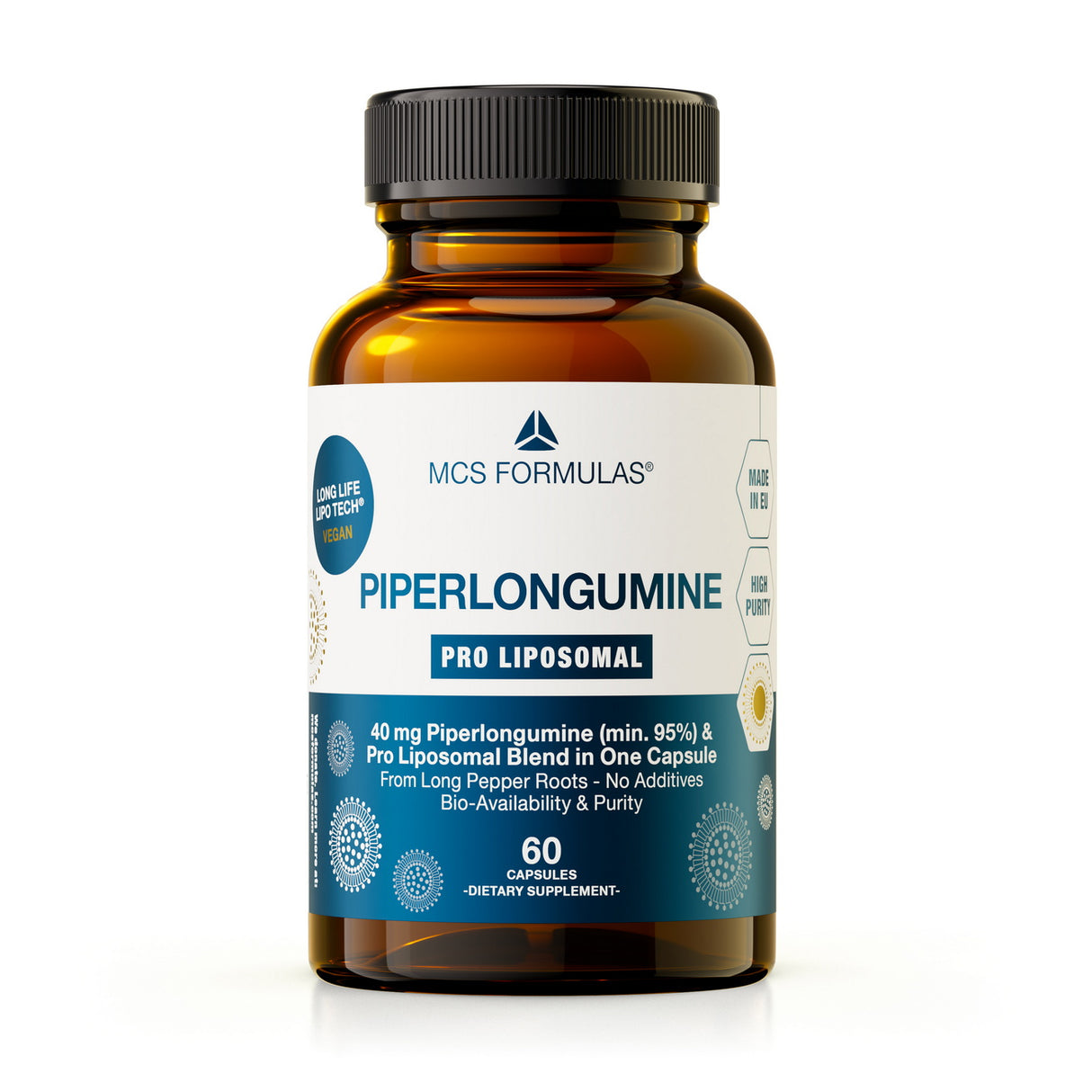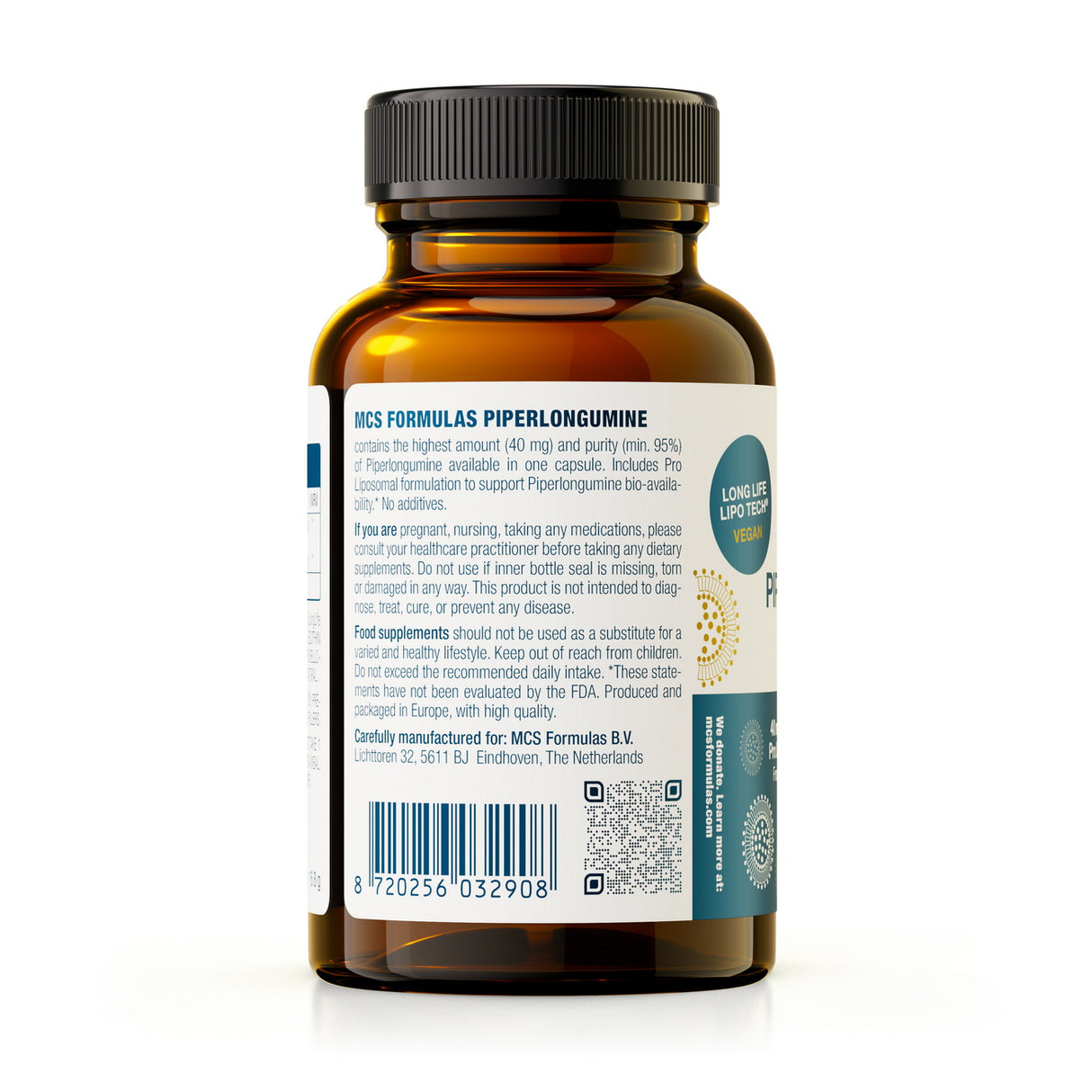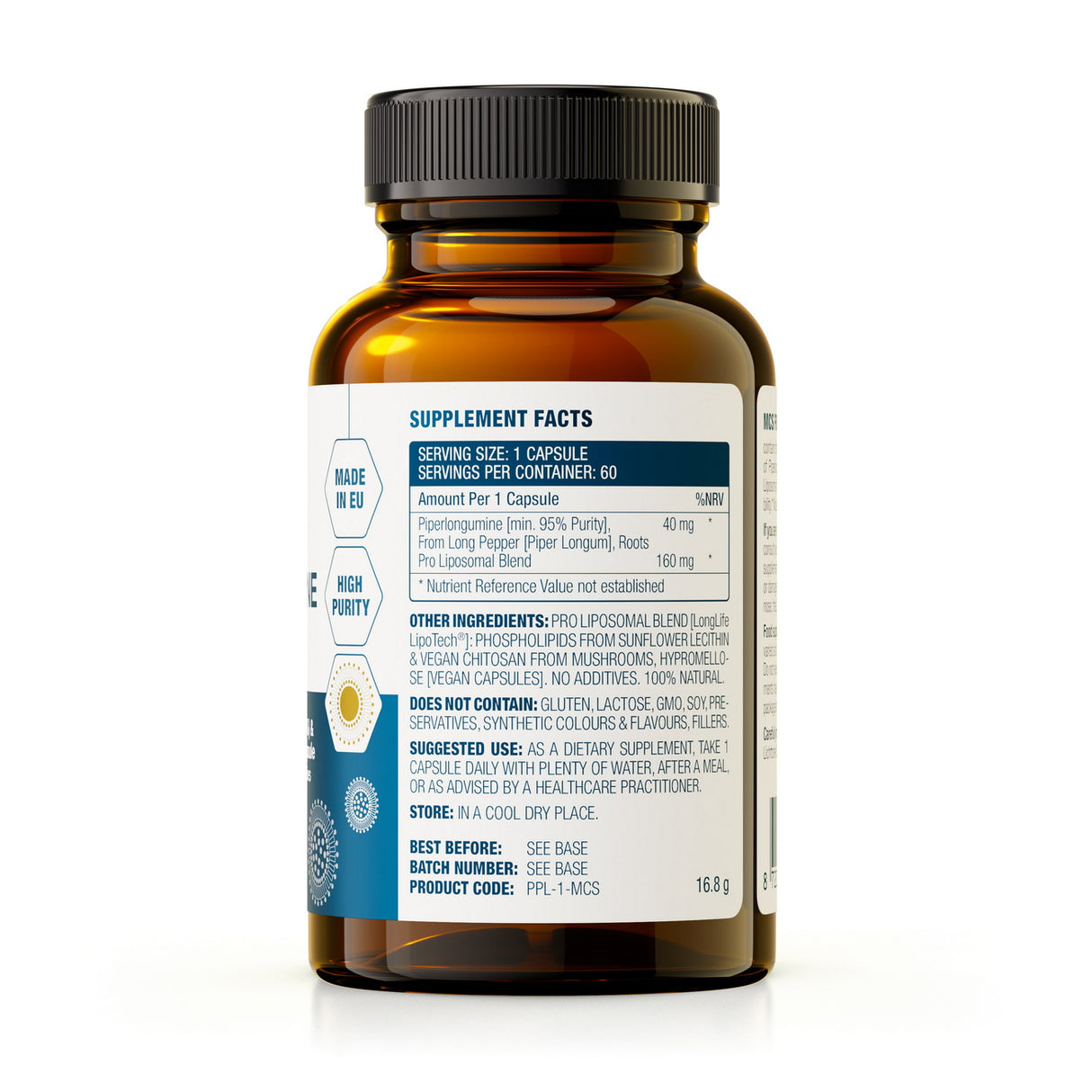Piperlongumine Pro Liposomal
Piperlongumine Pro Liposomal Black is backordered and will ship as soon as it is back in stock.
Piperlongumine Pro Liposomal – Maximized absorption and purity for balanced oxidative health
Summary
Piperlongumine Pro Liposomal is an advanced dietary supplement developed to support the body's natural oxidative balance and cellular processes. With a liposomal formulation that promotes increased bioavailability, this product provides pure Piperlongumine (>95%) from long horseradish, combined with LongLifeLipoTech™ for maximized absorption and stability. This supplement is completely free of artificial additives, gluten and genetically modified ingredients.
Benefits and effects
- Support for oxidative balance: Piperlongumine helps regulate levels of reactive oxygen species (ROS) in cells, which is essential for maintaining healthy cell function.
- Cellular renewal: Piperlongumine can support the body's natural apoptosis processes, which remove damaged cells and promote optimal cell renewal.
- Improved bioavailability: LongLifeLipoTech™ technology uses phospholipids from sunflower lecithin and chitosan to create neutrally charged liposomes, which ensure better absorption and circulation in the blood.
- Balanced cellular response: Piperlongumine supports the body's natural stress management by interacting with heat proteins (HSP) and regulating the balance of proteostasis.
- Antioxidant support: By promoting cellular antioxidant activity through the glutathione system, Piperlongumine can help the body deal with oxidative stress.
- Practical formulation: Dry liposomal powder form in capsules provides a long shelf life, easy use and no unpleasant taste.
Technical details and specifications
-
Content per capsule:
- Piperlongumine (>95% purity) from long pepper: 40 mg
- Pro Liposomal Blend (LongLifeLipoTech™): 160 mg (phospholipids from sunflower lecithin and chitosan from mushrooms)
- Capsule type: HPMC (vegan)
- Free for: Gluten, lactose, GMOs, soy, preservatives, synthetic colors and flavors, fillers.
- Recommended use: Take one capsule daily with plenty of water, after a meal, or as directed by a healthcare professional.
Disclaimer and disclaimer
Allowed to be used by adults. All use of supplements is at your own risk and should be done in consultation with a doctor. The recommended daily dose should not be exceeded. The effect of this product may vary from person to person. Dietary supplements should not replace a varied diet. Should be kept out of the reach of children. Uno Vita AS does not claim that the products we market can cure disease.
Freedom of expression and right to information
Uno Vita reserves the right to share publicly available research and information on health and wellness technologies, natural substances, vitamins and the like. We do this with reference to national and international laws on freedom of expression and belief.
Scientific references
- Patel, M. et al. "Role of Piperlongumine in ROS modulation." Oxidative Medicine and Cellular Longevity.
- Lee, J.H. et al. "Piperlongumine's interaction with antioxidant pathways." Journal of Cellular Biochemistry.
- Wang, Y. et al. "Heat shock protein modulation by natural alkaloids." Molecular Stress Responses Journal.
- Sharma, N. et al. "Antioxidant mechanisms in cellular health." Biochemistry and Pharmacology Review.
- Singh, S. et al. "Long pepper-derived compounds in cellular balance." International Journal of Molecular Science.
- Kim, H. et al. "Liposomal delivery systems for improved absorption." Advances in Nutritional Science.
- Zhou, P. et al. "ROS regulation and cellular stress pathways." Cellular and Molecular Biology Letters.
- Lim, C. et al. "Mitochondrial pathways and apoptosis." Journal of Applied Biochemistry.
- Huang, Q. et al. "Effects of chitosan on liposomal stability." Biochemical Engineering Journal.
- Chang, E. et al. "LongLifeLipoTech™ and liposomal efficiency." Nutraceutical Science Innovations.
- Das, S. et al. "Phospholipid formulations in bioavailability enhancement." Journal of Nutraceuticals.
- Nakamura, T. et al. "Cellular renewal and apoptotic processes." Journal of Molecular Research.











